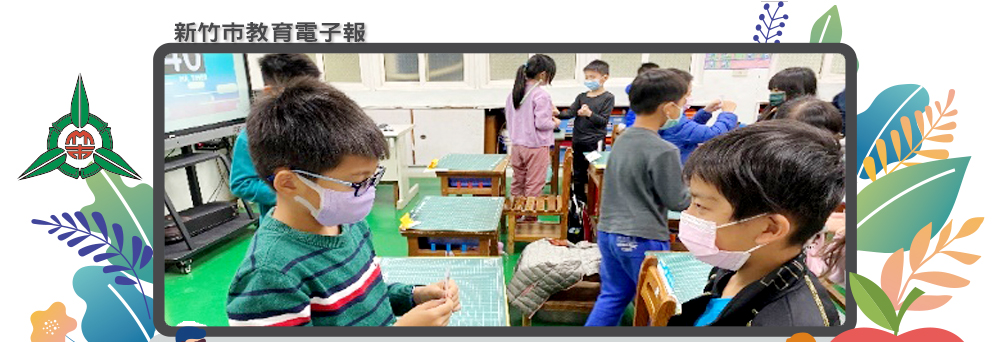

 |
 |
 |
 |
 |
 |
 |
|
|||||||||||||||||||||||||||||
|
《ABSTRACT》
Taiwan is one of the fortunate countries in the world during this pandemic. All over the world students are yearning to come back to their schools to learn face-to-face, but unfortunately, this COVID-19 pandemic is still circulating, killing, and preventing everyone to live a normal life and students are not exempt. Nevertheless, after a short halt because of a sudden surge from May to July 2021, Taiwan faces this challenge differently now and decided to continue the face-to-face classes despite the danger that continues to linger around. As an educator teaching in Taiwan, who experienced that sudden halt during the last quarter of the 2nd Semester in 2021, I suffered from the anxiety of overthinking for some ways as to how will I deliver my lessons substantially in an online class. Due to this need, I come up with some ideas as to how should we face the problem of teaching English online or face-to-face during this time of the pandemic. This is based on my experience from the May 2021 asynchronous type of online class combined with this year’s face-to-face. I tried to find some ways to make this restricted interaction a way different than normal. I showed the students how can we maximize the resources that we have for them to understand that learning works even beyond the four corners of the classroom. In May, when we had to go online classes, it was not very easy because of the asynchronous style in online learning. That is why I come up with these three (3) tips so that learning and teaching will be meaningful even during these tough times. 1. Utilize interactive platforms and games. Many teachers were so used to teach using traditional ways and wondering what to do during this new normal frustrates some of them. Coincidentally, even before this pandemic happened the world’s modern technology developed platforms like Google Classroom, Google Meet, Zoom, etc. that allow teachers to connect with their entire class with ease. Google Classroom is a blessing during this time for us because it served as a virtual platform where students can interact with the teacher easily. Lessons, homework, files, links, students’ outputs, and even questions can be attached, written, or asked and answered via Google Classroom. Aside from that, Google Meet helped a lot for virtual classes. But what aided with the integration of learning and evaluation of the students learning for me? Well, for me Kahoot! and Flipgrid applications helped a lot. Since students nowadays enjoy colorful video games and interactive games online, I realized that those things are also what will promote interactive learning in the classroom. Therefore, I prepared some questions using Kahoot! and give codes to the students for their log-ins, show them an example of how to play, and gather the points that they get afterward. Kahoot! is such a nice tool for asynchronous learning because it offers non-real-time playing. You can set it up from a certain date when you want it to start and the date when should it end. So, you can tell the students that they will be permitted to play once for a week and the students who will not be able to comply and play will be alerted through a post in the Google Classroom to ask for /her reason. The teacher should ask all the students who will play to write their class, number, and English name like this 501-1-Nick for easy checking. It is not only Kahoot! that can help to evaluate students understanding of the lesson that I have presented, Flipgrid also gives a way for me to assess how students can express themselves when they are in their comfort zone than when they are inside the classroom. During the pandemic, it was really hard to talk or test the students speaking questions one-by-one. Since speaking is a macro skill that students should learn in English, I tried my best to give speaking activities to the students in the asynchronous learning setup using Flipgrid. This application is available in Apple Store, Play Store, and even on the web which is why it is very accessible to everybody. The accessibility of it makes me realize that we have a way to assess the students speaking even if we don’t talk to them face-to-face or one-by-one. With this activity, I prepared myself that there’ll be students who will still ask about how to do this and that. Therefore, I made a video and wrote the script as an example for them. I realized as I modeled the sample answer it was easier for them to come up with their answers. I didn’t evaluate them on the way they speak alone, I also recognized their efforts to make the video, the content and coherence of their answers, and their diligence to finish the task in time. We know the challenges we face during the pandemic such as no internet connection at home, no time because they have so many classes in a day, or even that there are no available parents to help them finish the task. These instances made online classes and the use of any platform very hard, but as the teacher, you should be willing to extend help as much as possible. Well, for me since our school finally loosen up its restriction and students come back for face-to-face classes when I used this platform for the speaking practicum and test, I was able to borrow some iPads and help the students whom no one helped to make videos for themselves at home. They enjoyed it and even tried to convince their parents to help them make their videos at home the next time. Perhaps they realized they could have told something more if they did it at home. Since explaining everything online using PowerPoint while students are just listening can bore students because of the lack of involvement, these kinds of platforms will surely deliver light on the tunnel for the teachers who are losing hope on how can we maximize our teaching time and make learning exciting. I can attest that these platforms break up the monotony of the traditional type of teaching and make learning exciting even in a regular classroom setup.
2. Facilitate discussions and collaboration. After the long summer break and COVID-19 cases decreased in Taiwan, the schools opened again for face-to-face interaction provided that the students and the teachers wear masks. Everything seemed normal again. However, it was not the case for the students who stayed at home for 5 months for their online classes and summer vacation restrictions. The students got bored of staying at home longer than usual. Another very visible result is that they got a bit shy to socialize and they experience some frustrations on their own. To break the monotony of learning alone, I decided to put them in discussions, brainstorming, and collaborations with their classmates. It is a bit challenging at first. Little did I know some of them even felt that they just wanted to stay at home and learn online because they felt like everything around them can endanger them from getting COVID-19. In line with this, I always keep a good look at the safety measures and remind students to always wear their masks. So, with the feeling of safety and familiarity with their classmates I started breaking the classes into groups to make discussions, play games, brainstorm ideas and do other collaborative games. Turns out after most discussions and collaboration, they become more socially involved and happy. Most of them even earned new friends while others tightened their friendships because of healthy discussions. They were also able to present nice ideas and present work in front of the class. The activities that I made also go beyond the usual seat down discussions and speaking collaborations, I also made sure that they will play games together and enjoy many tasks in a group.
3. Task-Based Approach (Opening doors for students’ creative mind) Every child is special. The learners’ minds are full of imaginary things that need a channel to be showcased. For this reason, artwork, jingles, photos, poems, stories, songs, etc. are the best way to help the students express their learning and exercise their multiple intelligences. In one of my activities, I taught the places in the town and the city. Since I assessed that most of the students in my classes are more visual learners and most of them are very interested in arts, I come up with an activity wherein they will create their map of a city or town individually. In this activity the focus will be on various types of tasks like drawing the map, giving names to each place, and explaining what to see inside or what to do in those places. Well of course to make this activity possible the teacher should prepare pertinent materials like the printed materials. Task-Based Approach in learning is the best alternative for us, language teachers, during this time. Here we will set pre-determined goals beforehand that circle around the lesson that we have taught. The learning process will be fun for the students using this approach because this approach has certain stages that will bring about learning in a different light. It is more effective for the higher grade level. In this approach, students learn by doing. The tasks are usually rich in language, involving a wide variety of language areas, as well as the macro skills-reading, writing, speaking and listening. It involves the processing of information, communication, and interaction. And the task can be done alone, in pairs or a group. Stage 1: The Pre-Task I introduced the topic and gave the students clear instructions in two languages – English and their native language in written form with the help of a local teacher. I prepared this instruction and posted it in their Google Classroom in advance for them to get a good view of what task will they face soon. At home, the students were allowed to take notes of the places that they wanted to draw. They can also spend time preparing for the task or ask questions in advance for clarification.
Stage 2: The Task I asked everyone to take their materials, notes, and necessary stuff for the activity and started so they can finish on the set time. The students worked individually for them to freely express themselves without restrictions from partners or groupmates. I moved around the classroom to monitor and encourage everyone.
Stage 3: The Planning The students wrote the place’s name and filled out the data form for them to be prepared in the question-and-answer portion with their classmates. On this part, I made myself available in answering questions, giving advice, and clarifying things with the students regarding language questions.
Stage 4: Report First, I asked for some volunteers to share their maps. Then, I gave quick feedback regarding their work. I also commended their efforts and awarded them the best for each class.
Stage 5: Analysis For our next meeting, on my PPT I showed them comparisons of their work with other classes and presented some errors that students should change. I also showed some praiseworthy and fascinating features that they made while doing the task.
Stage 6: Practice Lastly, I let the students practice the vocabulary words that they have learned from the task and strengthened their ability to use the language with confidence. Therefore, whichever technique, approach, or materials we use during these thriving times for the education system because of the pandemic, we should always put our hearts into planning and make the end goal beneficial for our students who are also suffering hard.
|














